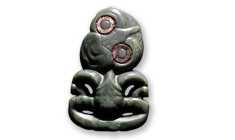Crime and its objects: Human/object relationships and the market for illicit latin american antiquities
Yates, D. (2021) ‘Crime and its objects: Human/object relationships and the market for illicit Latin American antiquities’, Mélanges de la Casa de Velázquez, 51(2), pp. 307–312.
I would like to start this short essay with a clear statement: the trade in antiquities from Latin America is more often than not illicit. The protective legal regimes of most Latin American countries, which forbid the extraction and export of antiquities and vest ownership with the state, pre-date the flowering of the international market for that material. With very few exceptions, all Latin American antiquities available on the international market were subject to illegal actions at some point in their past. Their ubiquity within auction houses, dealerships, and private and public collections speaks to the destructive nature of the looting and trafficking of cultural objects: evidence of crime is obscured or destroyed along with the original cultural contexts of these pieces. That does not mean that Latin American countries are not the rightful and legal owners of these antiquities, it simply means they cannot prove that they are. Yet the fact remains: this is an illicit trade. There is no legitimate market source of Latin American antiquities. A Latin American antiquity for sale without (and even with) provenance is likely an object of crime. This is no secret, as Latin American antiquities have been at the very core of the public debate about the global illicit trade in antiquities for over half a century1, and those who participate in the market know this. They are sophisticated, well-informed people who are privy to at least the same information about the illicit sources of Latin American antiquities available to archaeologists and law enforcement, if not more. With that in mind, it seems rather paradoxical to say that the people who sell and buy Latin American antiquities do not believe that they are supporting crime with their actions, and that they certainly do not consider themselves to be criminals. How can we account for that?
Available open access at: https://journals.openedition.org/mcv/15543
